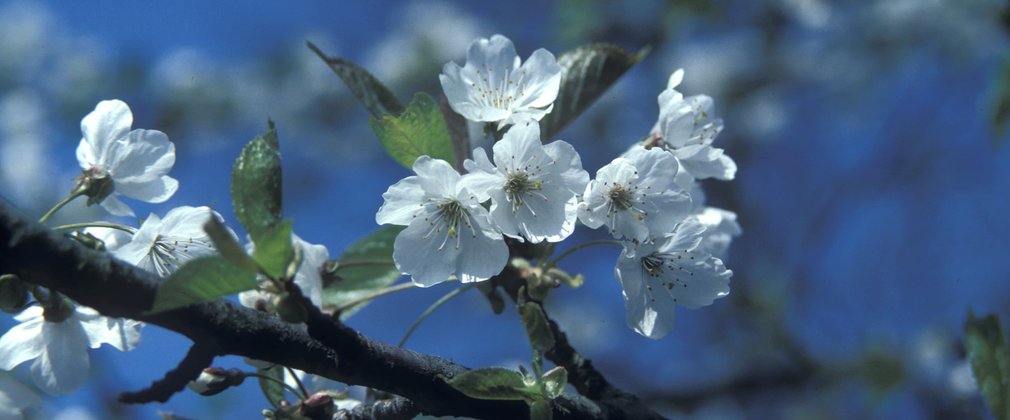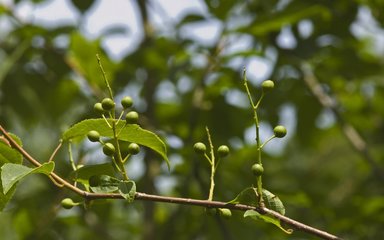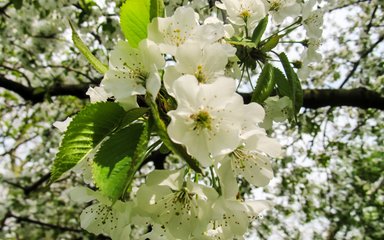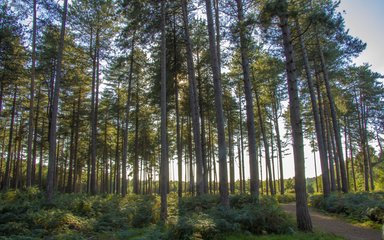
Wild cherry, also known as 'gean', is a fast-growing native tree found in woodlands throughout England. Celebrated for its colourful blossom and bright fruits, this tree is loved by gardeners and birds alike.
Wild cherry facts and figures
- with a life span of around 60 years, the wild cherry (Prunus avium) can grow up to 30 metres tall.
- its natural range is Europe, North Africa and West Asia.
- seeds are spread by birds and mammals dropping or swallowing them, but wild cherry can also self-propagate with root suckers.

Wild cherry identification tips
Heading out into the forest? Here are some top things to look out for to help you spot a wild cherry:
- bark: smooth and purplish-brown with a metallic sheen and horizontal bands of lenticels.
- branches: the lower branches spread, but the rest point upwards.
- flowers: have an almond-like scent and sometimes appear before the leaves.
- fruit: small green cherries follow the flowers, and turn red then purple when ripe.
How wild cherry is used
Wild cherry can be used as a 'rootstock' to graft a more productive fruit-bearing cherry variety. It can produce high quality timber as it grows with a straight stem, but requires pruning at the right time of year.
Its pinkish-brown wood can be highly polished and is used to make fine furniture, musical instruments, veneers, smoking pipes and is prized for turned items such as bowls.

Wild cherry and future forestry
A 'pioneer' species that needs light to grow, it grows very quickly for a broadleaf tree. This makes it useful for planting on new sites, but is not very long lived and prone to infection.
Wild cherry may favour a warming climate, but can suffer in drought. It will continue to be an important tree in mixed woodlands, and is valuable for wildlife, supporting many different species of moths.

